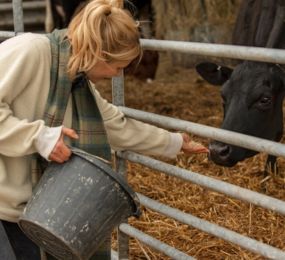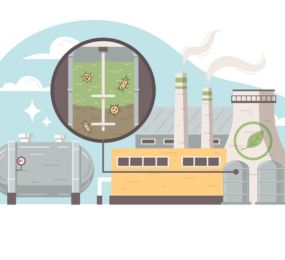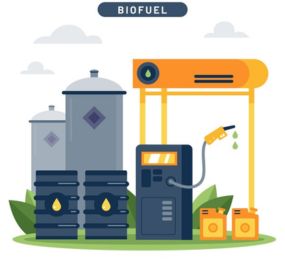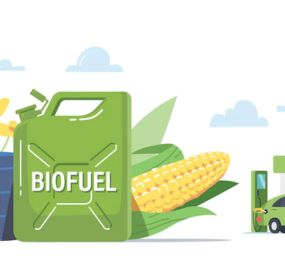In the epoch of the burgeoning global energy and sustainability crisis, an entrepreneur by the name Alex heralded what many called ‘Era of Green Energy.’ In her tiny garage, she kindled innovation with only a strong will and future prospects. This story embodies our times—transitioning to sustainable energy sources—from experimental trials to having a biofuel-driven vehicle ready for use on the roads. It is this kind of narrative that defines the essence of development in biofuels that companies such as Leadvent seek to champion—their mission is turning environmental foresight into practical results.
The State of Advanced Biofuels Forum
According to IRENA, total world biofuel production rose impressively by 9% in 2020 reaching about 154 billion liters. On the fuel front, biofuels have started making their mark with the U.S Energy Information Administration noting that they constituted 5% of all transport fuels used in 2020 and it is expected that it will rise up to 7% by 2025. Within these encouraging figures lie marked growths in advanced biofuels; The Advanced Biofuel Association identifies over two years an increase in capacity by 25% bypassing more than nine billion gallons. Further progress has also been stimulated through the Renewable Energy Directive (RED II) of the European Union targeting consumption of at least 14% renewable energy with major emphasis on transport. Moreover, there are decreased costs of producing biofuel for the last decade as celebrated by the U.S Department of Energy (DOE).
Advancements in Advanced Biofuel Technology
While cutting down on production costs, pioneering technologies are optimizing efficiency in biodiesel sector.Green Susan Dr., IRENA’s Director Sustainable Energy.“Breakthroughs registered by advanced biofuels towards improving energy security and economic growth,” says Dr. Susan Green.However, Michael Johnson remarks that these advancements open doors towards environmentally friendly power solutions throughout the globe; “unprecedented innovation in feedstock sourcing and conversion technologies,” according to Michael Johnson CEO of Advanced Biofuel Association.
Regulatory and Policy Landscape
Europe with its RED II initiative serves as a suitable example of how policies are important in developing the biofuels industry. “Advanced biofuels are central for reducing transport emissions,” says Emma White, Head of Renewable Energy at the EU Commission. Similarly, U.S. incentives have been pivotal in going green thereby becoming an ideal ground for biogas innovation.
Case Studies in Best Practices
Real-life achievements mirror the potential and diversity of advanced biofuels. While building on social efficiencies and economies of scale each story from waste-to-fuel capabilities displayed by Fulcrum BioEnergy to seaweed utilization for production witnessed with BioMCN presents a template. The same kind of practicality has been demonstrated by Velocys’ circular models as well as POET’s agricultural residues utilized for biofuel energy respectively.
Industry FAQs
Q: What differentiates advanced biofuels from conventional ones?
A: Also referred to as second-generation fuels, they are made out of non-food biomass feedstocks like agricultural residues, waste streams, and non-food crops thus differing from first generation fuels that were produced from food crops such as corn or sugarcane.Advanced biofuels provide a more sustainable option since they do not compete with food production and have lesser ecological footprints than other fuels derived from feedstocks.
Q: Are advanced biofuels truly sustainable?
A: Yes and first-generation biofuels are generally considered not to be sustainable because they use non-food biomass and waste materials therefore limiting competition for food production and land. Moreover, it is important to note that they may emit a lower amount of greenhouse gases when compared to other forms throughout their lifetime. However, technology involved, the source of biomass and how it is harvested as well as processed dictate sustainability.
Q: What are some issues that the advanced biofuel industry faces?
A: Some key challenges include high cost of production relative to fossil fuel and first generation biofuels, logistical difficulties associated with collection and transportation of biomass, technical obstacles in conversion of many different feedstocks into premium fuels as well as the need for policies of encouragement coupled with incentives capable of competing with others.
Q: Can these fit existing vehicles/infrastructure?
A: In many cases yes. Presently cellulosic ethanol which is one type of advanced biofuel can be mixed with gasoline for use at the moment. Another kind i.e. renewable diesel or biojet fuel can replace their fossil fuel counterparts directly without altering engines or distribution systems.
Q: How do governments support this?
A: Governments support the industry through various means, including research and development funding, subsidies for biofuel production and use, mandates requiring the inclusion of biofuels in fuel supplies, and policies aimed at reducing carbon emissions. For instance; European Union’s Renewable Energy Directive (RED II) sets clear targets for renewable energy consumption including those related to advanced biofuels thus trying to reduce greenhouse gas emission while getting cleaner energy sources.
The professionals want details about how the product can be produced and where will get enough raw materials for this whole project. Clarity accompanied by simplicity in information sharing serves as a crucial nurturing factor towards on-going projects alongside developing ones.
Advanced Biofuels take center stage among alternatives in the sustainable energy landscape. These embody the spirit behind this change, collectively driven by science, technology and innovation. In this transition process, Leadvent is positioned to mentor the industry’s leaders that are tomorrow’s builders. It is time for us to act as the industries move towards not only making money but also a healthier planet.
















